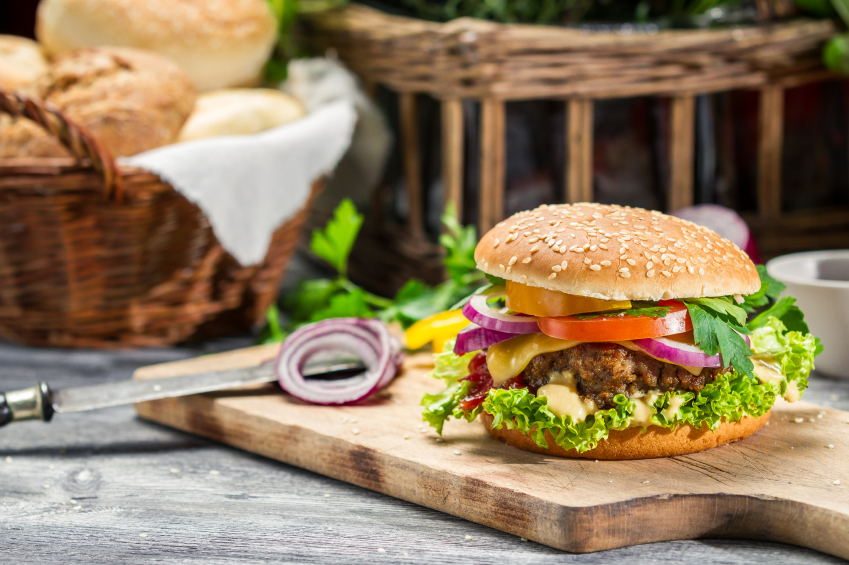The United States of America: 50 states, East Coast, West Coast, Heartland, over 320 million people and a heck of a lot going on everywhere at all times. On the food front, you have clam chowder in New England, burritos in the Southwest, fried chicken in the South, deep dish pizza in Chicago and so on. How are we supposed to summarize the culinary habits of this gigantic nation under the banner of ‘Modern American Cuisine’ let alone ‘American Cuisine’ when there is so much diversity?
In the 1950s, 1960s, 1970s and 1980s, before the rise of craft enterprises and our present food revolution, perhaps we could have written about the homogeneity of American cuisine – doughnuts, hamburgers, apple pie, thick-cut steaks, mac’n’cheese, corndogs, peanut butter and jelly sandwiches, bland coffee or whatever else was sold at the quintessential roadside diners. While these dishes could all easily fit within the description of ‘Classic American’, the modifier of ‘Modern American’ is more synonymous with ingenuity and international cultural fusions than with anything definitely traditional.
The Unites States is, after all, a nation of immigrants and one that has always survived on its entrepreneurial gumption, so it makes sense to ascribe these attributes to the country’s 21st century food creations. Only in America will you readily find avocado on pizza – the doughy pie first brought over by the throngs of Italian migrants around the turn of the century while avocados were adopted as a major source of umami flavor from our Mesoamerican neighbors. Only in America will Asian staples like sriracha and kimchi become wildly popular burger toppings (the word ‘hamburger’ is itself borrowed from Germany, following the millions of people from the fatherland who crossed the pond prior to World War I). Only in America…I think you get the idea.
However, in many ways describing your restaurant’s cuisine as ‘American’ is utterly meaningless, especially when your restaurant is situated in one of the 50 states. The fact remains that the USA is such a diverse and constantly changing nation that this identifier doesn’t help form an image in a consumer’s mind of what type or genre of food is crafted at a locale. These preformed images are important to be aware of because they establish what a customer will come to expect from their forthcoming dining experience. And if you have any marketing wherewithal at all, you know that expectations are everything. Using term ‘Californian’ works, as would ‘Floridian’ or ‘Midwestern’ or ‘Kentuckian’. But ‘American’? No.
Whereas an eatery described as ‘Modern Spanish’ might readily circumscribe consumer expectations of an exquisitely vivid tapas menu, ‘Modern American’ isn’t nearly as specific. It can mean creative burger combinations, counterintuitive pizza toppings, cosmopolitan taco permutations or even a new way of preparing a prime rib roast. When it comes to building customer expectations, ‘Modern American’ is hardly precise terminology, and therefore it should be avoided unless you know exactly how to use it. There are exceptions, of course, like, say, an American restaurant in Moscow that only serves the perfunctory burgers, fries, milkshakes and fruit pies – in this case, using this modifier does in fact help set the bar. But wait, such a place already exists; it’s called McDonald’s.
My point with all this is that we are largely misusing or under-representing the potential inscribed by the ‘Modern American’ or ‘New American’ monikers. Whereas McDonald’s, Burger King and other fast casual outlets might embody ‘Classic American’ cuisine with burgers and hot dogs reigning supreme (and some chains like Checkers still offer the archetypal 1950s drive-in experience), Modern American strives for bolder flavor combinations and incorporating food concepts on a global scale.
Along these lines, must a restaurant in this categorization have to serve a conventionally dressed hamburger with lettuce, pickles, onions, bacon and processed cheese? Ditto for pizza, wings, meat entrées, Caesar salads, grilled cheese sandwiches and so on. Why not surprise guests by offering a waygu beef patty (a Japanese cattle breed) with agave-glazed (a Mexican plant) pork belly and spicy piri piri sauce (an African chili cultivar) on a hemp seed bun? That’s three continents in a single bite. Hungry yet?
Essentially, deploying the ‘Modern American’ qualifier should carry with it the tacit marketing message of, “We are innovators. We are tinkering with your taste buds.” Like the Gilded Age and the great advancements made during that time to electrify our society, in this great food revolution we are currently experiencing I encourage you to take an Edisonian approach to your cuisine. That is to say, the core of Modern American fare is the process of trial and error, repeated and scrutinized until you craft something that is truly remarkable.
Many forward-thinking chefs are already hard at work towards this goal, striving to achieve their own American Food Dream. Regrettably, following the time-tested paradigm that scarcity often fuels the best innovation, this contemporary evolution is widely taking place outside of hotel properties and is in the hands of food truck operators, first-time restaurant owners and anyone else with a culinary vision but nominal monetary safety net.
My hope for you, as a hotelier, is to recognize this opportunity and to make your F&B offerings a vaunted amenity on par or surpassing all other operations. Harness the safety net afforded to your restaurants by being part of a larger entity to drive creativity. Challenge your Executive Chefs to run wild with their grand ideas. From well before the Gilded Age and right up until the start of the modern era, the hotel was the epicenter for the best cuisine available in any given city or region. Now is the time for the hospitality industry to regain its former glory, and embracing the full potential of the ‘Modern American’ banner may just be the rallying cry you need for F&B success.
(Article by Larry Mogelonsky, published in eHotelier on November 13, 2015)
